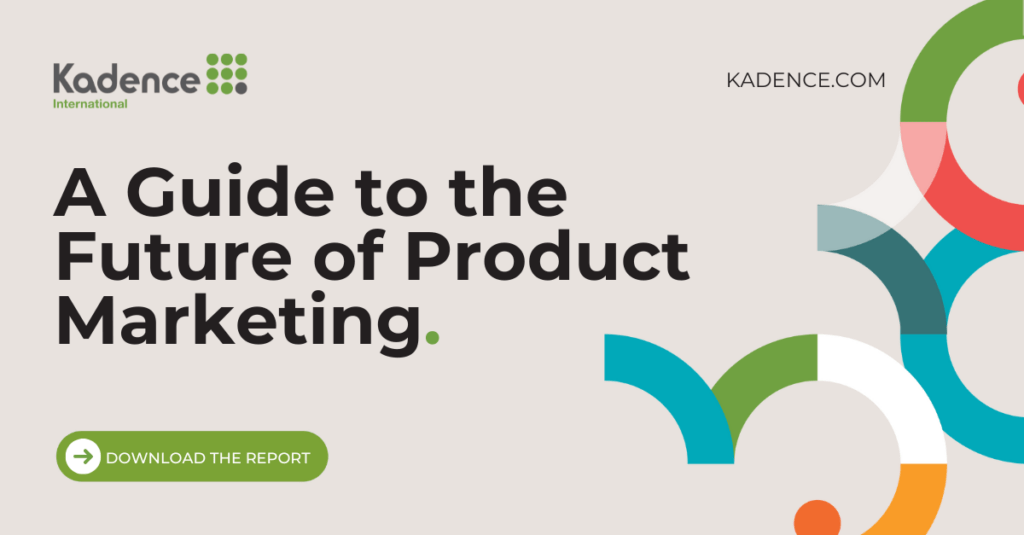With the vast amounts of data available today, marketers need to apply human analysis to extract strategy from the data presented.
However, as pointed out by Fiona Lovatt, the Human Insights Director for Nutrition in Europe at the Coca-Cola Company, during a panel at the Market Research Society’s 2023 Insight Alchemy conference this month, the reality of a brand manager’s role is such that they often lack the capacity to act strategically.
“I think if you walked in the shoes of a brand manager, a lot of people would be shocked at how operational and short-term that role can be,” she said.
Data is an essential tool for marketers looking to make informed strategic decisions. However, with the vast amount of data available, it’s easy to get lost in the numbers and lose sight of the human aspect. Marketers get bogged down by the day-to-day, so they do not have the time to focus on long-term strategic thinking.
That’s why marketers must use human analysis and understanding when extracting insights from data for strategic decision-making. This blog post will discuss why this is important and how marketers can achieve it.
The importance of strategic thinking in a post-Covid world.
As the world begins to emerge from the chaos and uncertainty of the COVID-19 pandemic, it is important to start thinking strategically about how to move forward. Now more than ever, strategic thinking is critical to achieving long-term success.
For one, strategic thinking allows businesses to identify, prioritize and capitalize on new opportunities. A sound strategy allows business leaders to identify where and how to invest resources best to meet long-term goals. As businesses return to pre-pandemic productivity levels, it’s important to remain strategic and capitalize on potential opportunities.
Strategic thinking can also help businesses mitigate risks. A strategic approach helps leaders better anticipate and plan for possible disruptions and formulate plans to address any unexpected challenges that may arise quickly. Strategic planning can also help companies avoid pitfalls or setbacks caused by misdirected resources or efforts.
Most importantly, strategic thinking enables organizations to adapt to an ever-evolving landscape. With the impacts of the pandemic, many businesses are facing a whole new set of challenges and opportunities. With the help of strategic thinking, business leaders can stay agile and proactively develop new strategies to help their companies stay competitive in this rapidly changing environment.
The post-pandemic world is dynamic and unpredictable. While technology provides abundant data, it must be used to create the insights needed for strategic decision-making and long-term planning. By embracing strategic thinking, business leaders can help ensure their organization is equipped with the necessary tools to remain competitive and succeed in this new environment.
Philips —the health technology brand, is making a conscious effort to help its marketers become more strategic by ensuring they have time to think about long-term strategy. As head of marketing insights and analytics for personal health, Fenny Léautier puts it, “the human behind it.”
Léautier wants his team members to spend time speaking to the consumer directly and not just focus on internal matters.
The importance of the human element in insights.
As digital marketers, the ability to interpret and analyze data to help guide our marketing strategies is essential. But in this digital age, there’s no shortage of data. So how can we use this data effectively?
The key lies in applying human analysis. Data itself is just a set of facts. We must rely on human intelligence and instinct to make sense of these facts and draw meaningful insights from them. In this post, we’ll discuss the need to combine human analysis with data to develop more effective strategies.
We all know the importance of data. We use it to make decisions, track trends, and create powerful campaigns. However, simply collecting data is not enough to achieve successful outcomes.
Rather than looking at data as numbers or figures, it is important to interpret the data to understand the context of the information fully. Analyzing data alone cannot provide a complete picture of what’s happening. The information must be combined with a more holistic approach incorporating subjective factors, such as customers’ feelings and perceptions and economic and cultural conditions.
Once we’ve assessed the data in the context of its wider environment, we can use the insights gained to form the foundation for an effective strategy.
To truly harness the potential of data, marketers need to create a dialogue between human intelligence and analysis and machine analysis. For example, it’s easy to use algorithms to spot trends and opportunities, but marketers must apply their own judgment to determine whether the opportunities should be pursued.
At the same time, human analysis of data must be supported by predictive analytics, AI, and other machine-driven approaches. By combining these elements, marketers can build on their human insights to make more informed decisions.
While data can provide valuable insights, it’s important to remember that data only tells part of the story. Human analysis and understanding can fill in the gaps and provide context to the data. For example, data might show a particular marketing campaign’s high conversion rate, but it doesn’t explain why. Using human analysis and understanding, marketers can identify the factors contributing to the campaign’s success and replicate them in future campaigns.
Additionally, data can be misleading if it’s not analyzed correctly. It’s easy to make assumptions based on data without considering the human element. Human analysis and understanding can help marketers to avoid these pitfalls and make more informed decisions.
Steps to ensure marketers are using human understanding when extracting insights from data for strategic decision-making:
How to Achieve Human Analysis and Understanding
- Put Yourself in Your Customers’ Shoes
Putting yourself in your customers’ shoes is essential to achieve human analysis and understanding. Understanding their needs, desires, and pain points can help you to make more informed decisions. Use data to identify trends and patterns in customer behavior, but don’t forget to consider the reasons behind those behaviors.
- Use Qualitative Data
Quantitative data, such as website analytics and sales figures, is valuable but doesn’t tell the whole story. Qualitative data, such as customer feedback and surveys, can provide insights into customers’ emotions, attitudes, and preferences. Use this data to better understand your customers and how they interact with your brand.
- Collaborate with Other Departments
Marketing doesn’t operate in a vacuum, and it’s important to collaborate with other departments, such as sales and customer service, to gain a broader perspective. These departments can provide valuable insights into customers’ experiences and pain points that may not be evident from data alone.
- Take a Holistic Approach
To achieve human analysis and understanding, it’s important to take a holistic approach to data analysis. Don’t rely solely on data to make decisions. When analyzing data, consider the human element, such as emotions, cultural context, and social factors.
- Use Data to Inform Decisions, Not Dictate Them
It is important to remember that data should inform decisions, not dictate them. Use data to identify trends and patterns, but don’t forget to consider the human element. Ultimately, marketing decisions should be based on data analysis and human understanding.
Data has become a valuable asset for marketers in today’s digital age. With the vast amount of data available, marketers can use it to make informed strategic decisions that can significantly impact their business’s success.
How marketers can harness data for strategic decision-making.
- Define your marketing goals.
Before you start gathering data, you need to define your marketing goals. Your goals will determine what kind of data you need and how you will use it. For example, if your goal is to increase website traffic, you must track metrics such as page views, unique visitors, and bounce rate. To increase sales, you need to track metrics such as conversion rate, average order value, and customer lifetime value.
- Identify the right data sources.
Once you have defined your marketing goals, you must identify the right data sources. Various data sources are available, such as customer, social media, website analytics, and market research data. Choose the data sources that align with your marketing goals and provide relevant insights.
- Collect and analyze data.
After identifying the data sources, you need to collect and analyze the data. There are various tools and software available that can help you collect and analyze data. Google Analytics is a popular tool for website analytics, while social media platforms have their own tools. Use these tools to gather data and extract insights to help you make informed decisions.
- Use data to make informed decisions.
Once you have gathered and analyzed the data, it’s time to use it to make informed decisions. Use the insights to optimize your marketing campaigns, personalize your messaging, and target the right audience. For example, if your data shows that your website has a high bounce rate, you can use it to improve your website’s user experience and reduce the bounce rate.
- Monitor and adjust
Data is not static, and it’s essential to monitor and adjust your marketing strategies based on new insights. Use A/B testing to test different marketing strategies and track their performance. Monitor your data regularly to identify new trends and make adjustments accordingly.
Additional steps customer-centric marketers take when using customer data for long-term decision-making.
- Define your target market. Start by clearly understanding who the intended customers are and what their needs are.
- Analyze customer data. Look at existing data on customer interactions and behavior to inform strategic decisions.
- Connect with customers to gather their opinions. Use feedback and survey data to uncover customer motivations, perceptions, and behaviors.
- Engage with competitors and benchmark performance. Study competitor data to understand market trends and uncover opportunities.
- Utilize predictive analytics to determine the probability of customer behaviors. Use advanced statistical techniques to inform decision-making.
- Use customer insights to develop customer personas. Break down data into customer segments and create stories about who your customers are and what drives their decisions.
- Identify customer segments for marketing activities. Utilize data insights to inform your customer segmentation strategy.
- Look for feedback in qualitative research. Combine both qualitative and quantitative research to assess the success of customer campaigns.
- Apply analytical techniques to assess customer experience. Collect customer feedback and apply techniques like focus groups and survey design to gain deeper insight into the customer experience.
- Constantly monitor customer behavior. Follow customer behavior trends closely and continually update analytics to identify new opportunities.
Best practices for using data to make strategic decisions
When using data to make strategic decisions, it is important to adhere to best practices.
Ensure you are working with high-quality data.
First and foremost, the data must be accurate and up-to-date. Poor data can lead to wrong or incomplete decisions, so ensure you source the data from reputable sources. Additionally, take steps to ensure the data you are using is up-to-date and valid.
Utilize different types of data when making decisions.
Not all data is equal in terms of reliability and accuracy, so consider multiple sources, such as surveys, financial reports, market research, customer feedback, etc.
Consider how you can make impactful, data-driven decisions.
Analyzing the data should give you insights that you can use to inform strategy. Leverage the data to come up with creative solutions, as well as make evidence-based recommendations.
By adhering to these best practices for using data to make strategic decisions, you can ensure that your decisions are based on accurate and reliable data and are ultimately successful.
Combining human analysis with data is the key to driving successful marketing strategies. Data provides the structure, while the human factor brings an understanding of the real-world implications. With a balance of the two, marketers can generate strategies to achieve the best campaign outcomes.
Get regular insights
Keep up to date with the latest insights from our research as well as all our company news in our free monthly newsletter.





 Senior Marketing Executive
Senior Marketing Executive Sales & Marketing
Sales & Marketing General Manager PR -Internal Communications & Government Affairs
General Manager PR -Internal Communications & Government Affairs Vital Strategies
Vital Strategies
 Customer Intelligence Director
Customer Intelligence Director